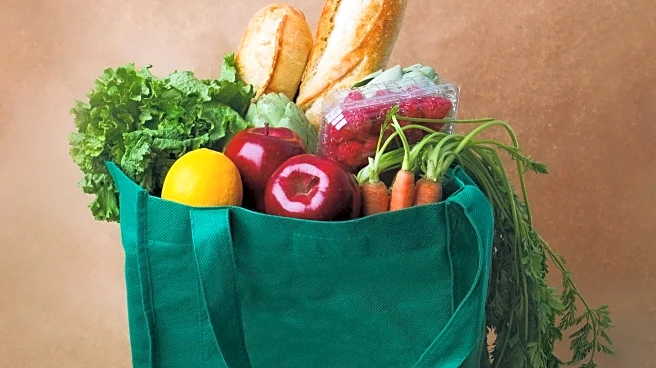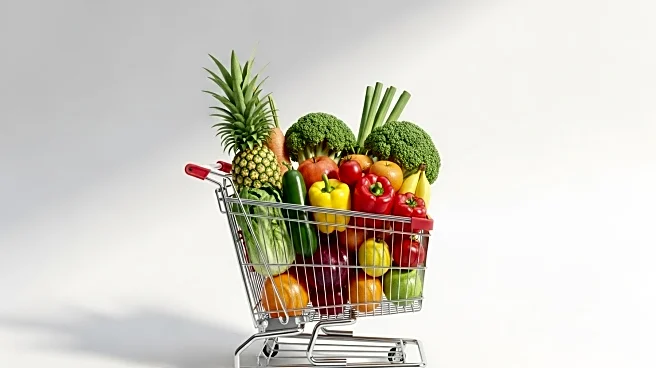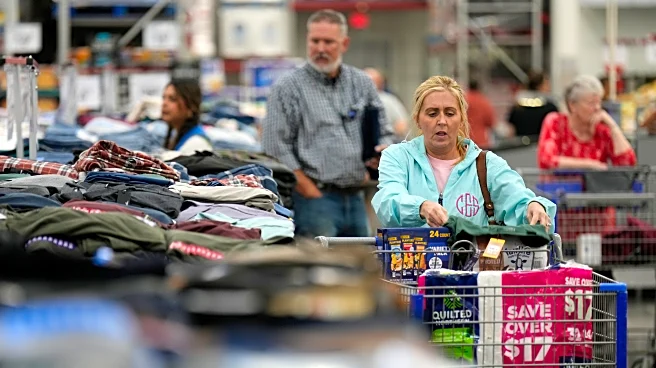What's Happening?
AOL has published an article identifying seven grocery items that are contributing to higher spending for American consumers. The article highlights that the average American spends approximately $235 a week on groceries, which amounts to nearly $950 per month. The report attributes this increase not only to inflation but also to the purchase of certain items that are more expensive than necessary. These items include bottled water, precut produce, individual yogurt cups, preshredded cheese, single-serve snack packs, name-brand cereals, and grocery store coffee. AOL suggests alternatives such as using water filter pitchers, buying whole fruits and vegetables, purchasing plain yogurt in larger containers, grating block cheese, buying snacks in bulk, opting for store-brand cereals, and sourcing coffee from warehouse stores or local roasters.
Why It's Important?
The article underscores the importance of making informed choices to manage grocery expenses effectively. By identifying items that are unnecessarily costly, consumers can make strategic decisions to reduce their weekly grocery bills. This is particularly significant in the current economic climate where inflation is impacting household budgets. The suggested alternatives not only offer cost savings but also promote healthier eating habits and reduce waste. For instance, buying whole produce instead of precut options can enhance freshness and flavor while saving money. Similarly, opting for store-brand cereals can provide the same quality at a lower price. These changes can lead to substantial annual savings, which can be redirected towards other financial goals such as building an emergency fund or paying off debts.
What's Next?
Consumers are encouraged to adopt the recommended strategies to optimize their grocery spending. This includes planning meals, using cashback rewards, and buying in bulk wisely. Additionally, the article suggests that savings from these changes should be invested in high-yield savings accounts to maximize financial benefits. As consumers become more aware of these cost-saving measures, there may be a shift in purchasing patterns, potentially influencing grocery store offerings and pricing strategies. Retailers might respond by promoting more budget-friendly options or enhancing their private label product lines to cater to cost-conscious shoppers.
Beyond the Headlines
The article touches on broader implications such as the environmental impact of reducing reliance on single-use packaging and processed foods. By choosing alternatives like refillable water jugs and bulk purchases, consumers can contribute to sustainability efforts. Moreover, the emphasis on healthier food choices aligns with public health initiatives aimed at reducing sugar and additive consumption. These shifts in consumer behavior could lead to long-term changes in the grocery industry, encouraging more sustainable practices and healthier product offerings.












